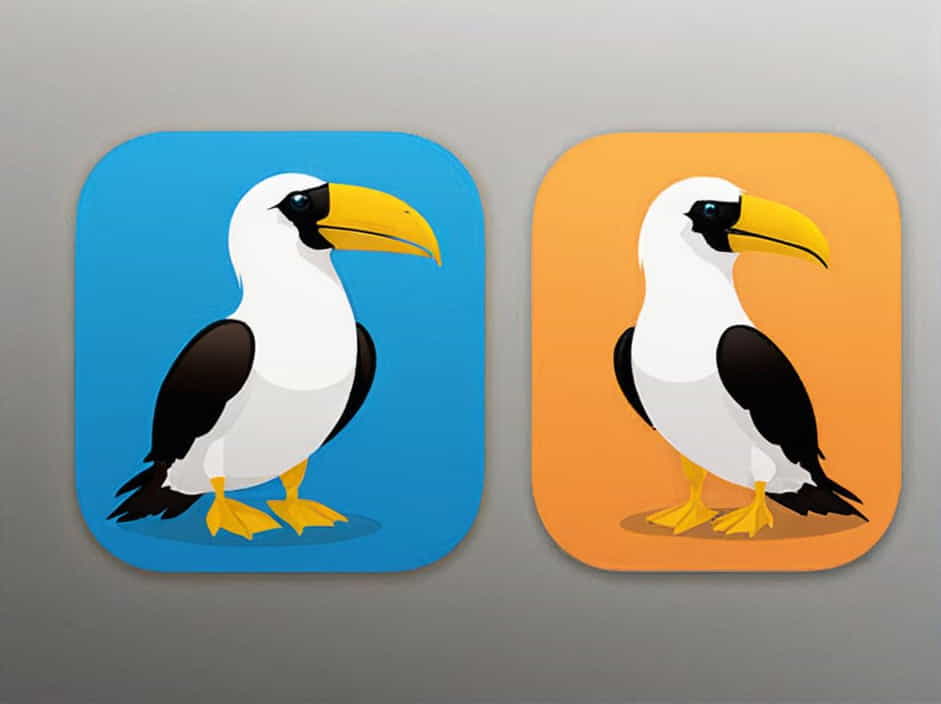Nazca Booby (Sula granti) and Masked Booby (Sula dactylatra) are two closely related seabirds that often cause confusion due to their similar appearances. However, they have distinct characteristics that set them apart. This topic explores their differences in physical traits, habitat, behavior, and diet.
1. Introduction to Nazca Booby and Masked Booby
Both the Nazca Booby and the Masked Booby belong to the Sulidae family, which includes other booby species and gannets. These large seabirds are known for their striking plumage, powerful flight, and impressive diving skills. Despite their similarities, they have unique features that distinguish them from each other.
2. Physical Differences
A. Size and Shape
- The Nazca Booby is slightly smaller than the Masked Booby, with an average wingspan of around 150 cm (59 inches).
- The Masked Booby is the largest of all booby species, with a wingspan reaching 165 cm (65 inches).
B. Coloration and Facial Markings
- Nazca Boobies have black masks around their eyes that contrast sharply with their bright white feathers.
- Masked Boobies also have a black facial mask, but it often extends further behind the eyes.
C. Bill Color
- One of the most noticeable differences is their beak color. Nazca Boobies have a vibrant orange to reddish bill, which is a key identifying feature.
- Masked Boobies have a yellow to pale greenish bill, making them easier to differentiate.
3. Habitat and Distribution
A. Nazca Booby Habitat
Nazca Boobies are primarily found in the eastern Pacific Ocean, with a strong presence in the Galà¡pagos Islands. They prefer nesting on rocky cliffs and coastal islands where they have access to deep waters for hunting.
B. Masked Booby Habitat
Masked Boobies have a much wider global distribution. They inhabit tropical and subtropical oceans across the Atlantic, Pacific, and Indian Oceans. They often nest on remote islands, including Ascension Island, Christmas Island, and Clipperton Island.
4. Breeding and Reproduction
A. Mating Behavior
- Both species engage in elaborate courtship displays, including sky-pointing, beak fencing, and mutual preening.
- Males typically select nesting sites and attract females with vocalizations and physical displays.
B. Egg-Laying and Incubation
- Nazca Boobies usually lay two eggs, but only one chick typically survives due to sibling rivalry (known as obligate siblicide).
- Masked Boobies also lay two eggs, but sibling competition is less extreme compared to Nazca Boobies.
5. Feeding and Hunting Strategies
A. Diet Composition
- Both species primarily feed on small fish and squid.
- Common prey includes anchovies, flying fish, and sardines.
B. Hunting Techniques
- They are plunge divers, meaning they dive from great heights to catch fish underwater.
- Nazca Boobies often hunt in deeper waters, while Masked Boobies are seen foraging over open ocean areas.
6. Behavior and Social Structure
A. Colonial Nesting
- Both species nest in large colonies, often with other seabird species.
- Nazca Boobies prefer rocky cliffs, while Masked Boobies choose flat open ground on remote islands.
B. Aggressive Tendencies
- Nazca Boobies are more aggressive during breeding, particularly due to their practice of siblicide, where the older chick kills the younger one.
- Masked Boobies, while also competitive, are slightly less aggressive towards siblings.
7. Conservation Status and Threats
A. Population Trends
- Both species are classified as Least Concern by the IUCN, meaning they are not currently endangered.
- However, localized population declines have been observed due to climate change, human disturbance, and fishing industry impacts.
B. Main Threats
- Overfishing reduces the availability of their primary food sources.
- Plastic pollution poses a serious threat, as they sometimes ingest plastic debris.
- Habitat destruction, particularly in the Galà¡pagos, affects Nazca Booby populations.
8. Key Takeaways
| Feature | Nazca Booby (Sula granti) | Masked Booby (Sula dactylatra) |
|---|---|---|
| Size | Slightly smaller | Largest booby species |
| Bill Color | Orange to red | Yellow to pale green |
| Habitat | Eastern Pacific, Galà¡pagos | Global, tropical oceans |
| Nesting | Rocky cliffs | Flat open ground |
| Sibling Rivalry | Strong (siblicide common) | Milder competition |
| Conservation | Least Concern, but localized threats | Least Concern |
The Nazca Booby and the Masked Booby are fascinating seabirds with distinct characteristics. Their differences in size, beak color, nesting behavior, and habitat help distinguish them. Despite their global presence, these birds face threats from climate change, fishing practices, and pollution. Conservation efforts are essential to protect these magnificent seabirds and their ecosystems.
By understanding their unique traits, we can appreciate the diversity of marine birdlife and the importance of preserving their natural habitats.
